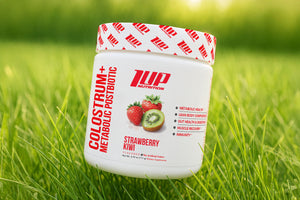Weight loss is something which many people attempt and succeed at over the years. Unfortunately, many of those same individuals aren’t able to maintain their results over the long term.
The vast majority of individuals that do lose a significant portion of body weight inevitably gain it back (and usually some additional pounds) in the weeks, months, and years after losing it.
But, that doesn’t have to be the result.
You see, one of the main reasons that individuals aren’t able to sustain their results is that they utilize diet and/or training practices that aren’t sustainable.
For instance, a common practice adopted by many people when trying to lose weight is to eliminate certain foods or entire food groups, typically carbohydrates. And sure, if you eliminate an entire macronutrient from your diet you’ll lose weight on account of reducing energy intake. But, what happens 6 months from now or a year from now when you’re at a birthday party, work function, or you just feel like having a night out with friends to eat and drink whatever you want?
Do you really want to live like a chaste monk that can never touch, smell, or even think about carbs for the rest of your life?
NO, and it’s impractical, illogical, and flat out ridiculous to adopt such draconian practices.
The truth is that you can lose weight and keep it off for the long term without having to adopt any extreme diet or exercise regimens.
Here, we present 3 rules for effective, long-term weight loss.
#1 Calculate Your Maintenance Calories
At the end of the day, we can talk about hormones, “superfoods”, bio-hacks, etc, but the reality is that in order to lose weight you need to be in a calorie deficit.
In order to create a deficit, you first need to have an idea of the number of calories you need to eat tomaintain your body weight.
Once you have a rough idea of how many calories you burn each day, you can then create the deficit needed (through a combination of diet and exercise) to force your body to burn its stored body fat for energy.
There are a number of ways you can go about estimating your maintenance calories. For instance, you could use one of the many TDEE calculators that are readily available on the interwebs. You could also track your calorie intake each day with pen and paper all the while tracking your daily bodyweight with a scale and see how your weight fluctuates.
Still another option (and the one we prefer) is to use to 1UP Fitness App, which provides customized suggested calorie intakes for you based on your age, sex, goals, etc.
Now, if you’re new to the world of fitness, and more specifically tracking calories/macros, the notion of logging every morsel of food you put into your mouth can seem quite daunting. But, the truth is that it doesn’t require all that much time or effort, and the more you practice (just like everything else in life) tracking calories/macros the more efficient you become.
Plus, we created the 1UP Fitness app with the intention of streamlining the tracking process to help you get results faster while making the process easier than ever.
Before you know it, you'll be tracking your calories/macros faster than you can say “if it fits your macros.”
Which brings us to our next point…
#2 Tailor Your Macronutrients
As we stated above, calories are king when it comes to pure weight loss, meaning that it doesn’t matter what you’re consuming so long as that if you’re in a calorie deficit, then you will lose weight.
Truth be told, though, when a person says they want to “lose weight” what they really mean is that they want to “lose fat.”
You see, when you “lose weight” you could be losing a mixture of water, muscle, bone mass, and (of course) fat. Focusing purely on “weight loss” leads individuals to solely rely on the scale to track progress, and while it can be a useful tool for assessing progress, it, by no means, is the only tool in the shed.
So, the question becomes -- “how do we structure our nutrition plan to emphasize fat loss not just weight loss?”
When it comes to body composition, protein intake is king. It provides the literal building blocks (amino acids) your body needs to build and repair muscle, support vital tissues & organs, produce hormones, support bone development/maintenance, and much more.
Something else to keep in mind is that whenever you are in an energy deficit (i.e. dieting), your increase the risk of muscle loss. Consuming enough daily protein helps stave off your body from catabolizing it’s own lean muscle mass, which helps keep your physique looking sharper as you drop pounds (thus avoiding the dreaded skinny fat look) and keeps your metabolism higher (as muscle is more metabolically active than fat).
Yet another thing to consider is that consuming a higher protein diet (~1-1.2 grams of protein per pound of bodyweight per day) is known to improve weight loss outcomes and help individuals maintain those results. The reason for this is multifactorial.
For starters, protein is the most satiating macronutrient, meaning it helps keep you feeling fuller for longer than an equivalent amount of carbohydrates or fat. It also causes your body to expend more calories digesting it than either carbs or fats.
Basically, protein helps you to feel less hungry all the while burning more calories during the day.
Once you have your protein intake set, you can then divide the rest of your remaining daily calories needed to lose weight between carbohydrates and fat. This is where it will take a bit of trial and error on your part.
Some individuals find greater energy levels and less cravings going lower carb (not NO carb) and higher fat, while many other individuals enjoy eating more carbohydrates and a slightly lower amount of fat.
If you need help figuring out the right macronutrient split for your goals, you can always log into the 1UP Fitness App, where we provided customized suggested daily calorie and macronutrient intakes based on your age, gender, weight, goals, etc.
#3 Slow & Steady Wins the Race
One of the biggest hurdles individuals face when embarking on a transformation challenge is patience.
We live in a society of immediate results and when individuals don’t magically get the results they want in short order, they get frustrated and start to say things like “calorie counting doesn’t work” or “my hormones are messed up” or any of another 100+ excuses for why they didn’t get the job done.
Truth be told, you can lose a lot of “weight” in a few short days by simply cutting all carbohydrates from your diet and doing a “juice detox.” However, the quality of the weight loss is garbage. Doing such an extreme diet protocol isn’t sustainable long term, which means you won’t maintain your results. At best you lose a lot of water weight and some muscle with very little actual fat loss.
If you’re serious about actually losing fat, improving health & body composition, and maintaining those results for weeks, months, and years to come, then you want to be like the tortoise and not the hare. In other words, slow and steady wins the race.
Sure, you may not lose 10 pounds in a week like the magazines lie about doing, but the weight you will lose will actually be from fat and you’ll be able to consistently lose this amount of weight without feeling like you’re living in the gym or starving yourself.
An effective (and sustainable) rate of weight loss is about 1% of bodyweight per week.
To put this in perspective, this would mean losing about 1.25-1.5 pounds per week for an individual that weighs ~150 pounds.
Going more aggressive with your rate of weight loss significantly increases the chance for muscle loss, and it makes dieting that much tougher on your body, both mentally and physically. Furthermore, going too aggressive with your cut also impairs workout performance, cognitive function, mood, motivation, and focus.
Finally, research also shows that individuals who take the slow and steady (aka realistic and sustainable) approach to weight loss have greater success losing weight and keeping it off over the long term.
Takeaway
Long-term weight loss may seem an unattainable goal, but the truth is that many of the methods promoted by the mainstream media and “influencers” out there set individuals up for failure.
There are NO gimmicks, hacks, shortcuts, superfoods, or magic workouts.
The only things that will get you the fat loss results you want are a moderate calorie deficit, hard training, and patience.
If you need help figuring out how many calories to eat to lose weight or designing a training program that fits your lifestyle and equipment availability, check out the 1UP Fitness app where we provide customized, detailed information for you to get the results you want. We also include access to our Facebook group where you can interact with and get support from other like-minded, motivated individuals.
And, lastly, we realize that dieting (no matter how smartly the plan is designed) will present challenges, especially in the area of hunger management and craving control. That’s precisely why we developed the 1UP Appetite Suppressant.
1UP Appetite Suppressant contains a precise combination of research-backed, non-stimulant ingredients to help tame hunger and cravings, helping you stick to your calorie intake goals so you can achieve the weight loss results you want.






